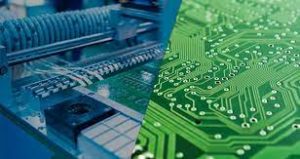Streamline Circuit Board Assembly With Automation
Circuit Board Assembly With Automation
Streamlining circuit board assembly is one of the most important steps in manufacturing PCBs, reducing costs and speeding up production. In order to optimize assembly processes, engineers must perform simulations and virtual prototypes in the early phases of a design process. This enables them to validate the effectiveness of automated assembly plans before investing in physical equipment and production facilities. It also limits costly layout revisions and allows time for a full test cycle to ensure that the finished product is functioning as intended.
The complexities of modern electronic components require manufacturers to implement a range of assembly automation technologies. Some of these include automated pick-and-place machines for placing small component parts onto PCBs, reflow and selective soldering techniques that speed up the circuit board assembly process, and advanced inspection systems that provide real-time monitoring of the assembly process. These systems can detect flaws, identify potential problem areas, and resolve them quickly.
These advancements are driving the trend toward incorporating software automation in the production of PCBs, particularly for high-volume runs. Contract manufacturers that adopt this new technology will be better positioned to meet customer demand for shorter turnaround times and higher-quality products.

Streamline Circuit Board Assembly With Automation
Software automation enables companies to modify the assembly process without having to modify or reconfigure equipment or retrain workforces. This flexibility reduces the amount of downtime required for a change in the assembly sequence and eliminates production delays, increasing productivity. The software also helps to streamline the workflow by automating repetitive tasks and eliminating manual steps that can lead to errors.
Optical inspection is another critical aspect of the assembly process, and automated AOI systems can speed up this operation significantly. These tools use various probes to connect with designated test points on the PCB, and a programmed computer logs all the results. This helps to identify any defects and inconsistencies in the assembly process, preventing them from reaching the final product and potentially impacting the quality of the finished product.
Automation in circuit board assembly can improve the overall quality of the finished product, making it more durable and reliable. These benefits can help companies to achieve their sales goals and increase profitability. However, it is important for businesses to understand that the initial investment in hardware automation can be greater than traditional assembly methods.
There are a few circumstances when it may be more cost effective for a company to rely on manual assembly rather than investing in the necessary equipment and training for an automated process. Thru-hole components in low-volume run productions are an example of when it might be more efficient to work by hand rather than automating the process.
Whether or not you are implementing an automated assembly line, you can make the most of your production resources by standardizing component packaging and storage. Using tape-and-reel or other types of packaging that makes it easy for the assembly machine to pick up and place SMD components is key. In addition, you can reduce production time and costs by using inventory management and supply chain systems that streamline the flow of materials to the assembly machine. Finally, you can minimize the risk of errors by providing comprehensive employee training in advanced assembly techniques, equipment operation, and quality control measures.